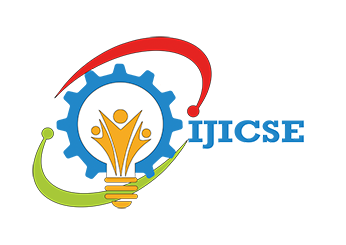
Publication Process
The following describes the persons involved in publication
Roles and responsibilities:
- Disseminating guidelines and giving instructions to all authors for preparing and submitting manuscripts.
- One of the major responsibility include giving a clear cut statement regarding the Journal’s policies for authors on authorship criteria
- The role of an editor is to treat the entire scientific community as one, and treat all authors by being fair, courteous, objective, honest and transparent in every activity related to either peer review process or publication.
- To establish a clear cut mechanism to address, establish and define policies on conflicts of interest for all involved in the publication process, including editors, authors, and reviewers.
- They must have a mechanism to protecting the confidentiality of every author’s work
- Putting in place a fool proof system for effective and rapid peer review, and providing the information to the author on a regular basis
- Making editorial decisions with reasonable speed and communicating them to the authors in simple, clear and constructive manner.
- Continuously monitor the progress of review from the reviewers and be vigilant in avoiding the possibility of editors and/or referees delaying a manuscript for various and suspicious reasons.
- Establishing a procedure for reconsidering editorial decisions, in case there is a discrepancy in different reviews submitted for the same manuscript
- Describing, implementing, and regularly reviewing policies for handling ethical issues and allegations or findings of misconduct by authors concerned with the peer review process.
- Informing authors who submit manuscripts that the submission will be evaluated according to the journal’s standard procedures
- Developing mechanisms, in cooperation with the publisher, to ensure timely publication of accepted manuscripts after revision.
- Clearly communicating all other editorial policies and standards.
- The author/authors must acknowledge the source of funding and also the facility where the research was performed and include this information in the acknowledgment section of the submitted manuscript.
- The editor must provide the copyright statements and the conflict of interest statements to the authors, and also clearly inform the consequences in case there is an infringement of the copyright laws.
- The editor must verify with his editorial team, whether the journal suits the standards for being published in the journal, in terms of the scope of the proposed research or submitted short article or communication.
- Include (usually written) permission from each individual identified as a source of personal communication or unpublished data.
- Describe and provide copies of any similar works in process.
- Provide copies of cited manuscripts that are submitted or in press.
- Cite and reference other relevant published work on which the submitted work is based.
- Obtain permission from the copyright owner to use/reproduce copyrighted content (e.g., figures and tables) in the submitted manuscript, if applicable.
In terms of an effective blind peer review editors are responsible for;
- Monitoring and ensuring the fairness
- Timeliness
- Attention to detail
- consideration of the manuscript for publication.
Blind peer review by external referees who have the necessary subject expertise is the most common method to ensure manuscript quality for publication. Sometimes manuscripts are rejected without external peer review, to make use of their resources, some of the reasons include, that the manuscript does not fit into the scope of the journal, does not meet the quality requirements of the journal and lacks novelty and originality in terms of the submitted information.
Referees are normally selected either by the editor or by associate editor and in some cases the members of the editorial board to whom the task has been delegated.
Some journals attempt to mask the identities of both the authors and reviewers, although masked, the identity of the author(s) may be known by the reviewers based on the area of research. Many journals follow the practice of keeping reviewer identities anonymous to the author.
Blind peer review is usually a very gifted scientific process, it needs a lot of time from scientists and global researches for whom time is a very precious commodity. Hence a backup must be ready with the editor in case one of the reviewers might opt to stay away from the peer review process.
Evaluating all manuscripts considered for publication to make certain that the conclusions and evidences provided are matching with the scope of the journal.
Providing literature references and author contact information so interested readers may pursue further discourse.
Creating mechanisms to determine if the journal is providing what readers need and want (e.g., reader surveys).
Providing a mechanism for a further discussion on the scientific merits of a paper, such as by publishing letters to the editor, inviting commentaries and article blogs.
Working with the publisher to attract the best manuscripts and research that will be of interest to readers.
An editor essentially is totally responsible for what appears in his or her journal.
The author has to establish and maintain high-quality journal content
The editor’s right to editorial freedom may be supported by the following and must have consensus between the editor and the journal owner/publisher: These include;
- Journal mission statement
- Written editorial priorities and objectives
- Written editorial policies
- An editorial board, including associate, assistant, and topic editors, that is nominated or appointed by and reports to the editor
- Sufficient support from the parent society, publisher, owner, or other journal sponsors in both funding and staff to carry out the journal’s stated mission.
Editors and the publication staff should keep all information about a submitted manuscript confidential, sharing it only with those involved in the evaluation, review, and publication processes.
To minimize the potential to influence editorial decisions, many journals have policies not to release content to the publication’s sales team until it has been accepted or published.
